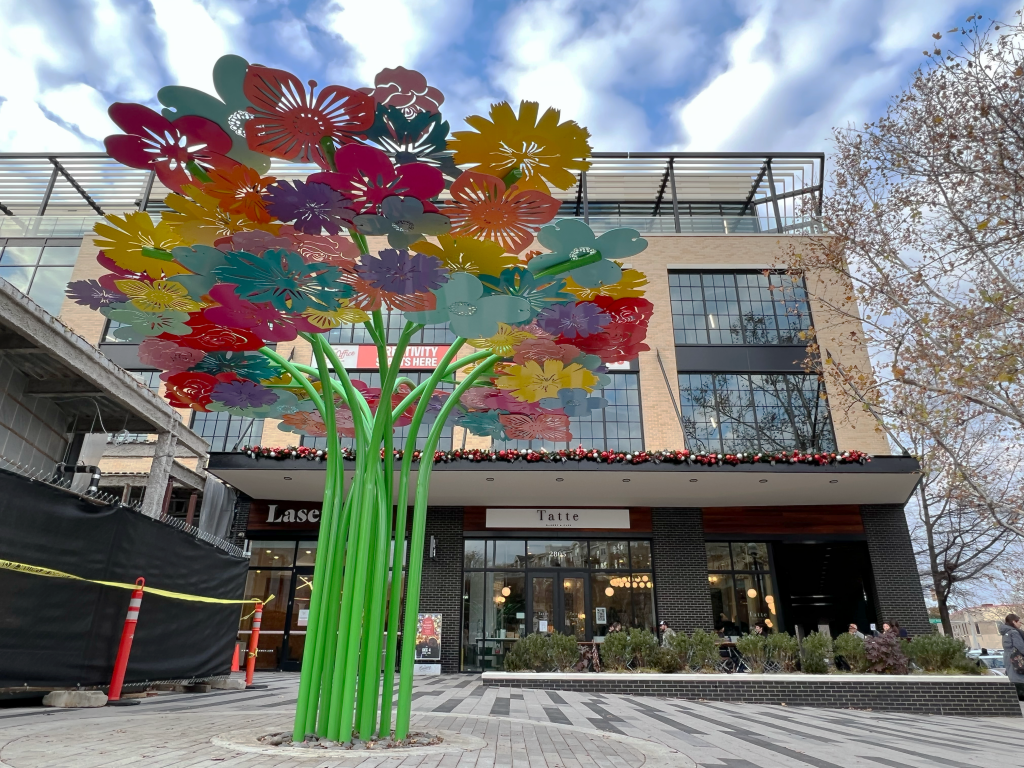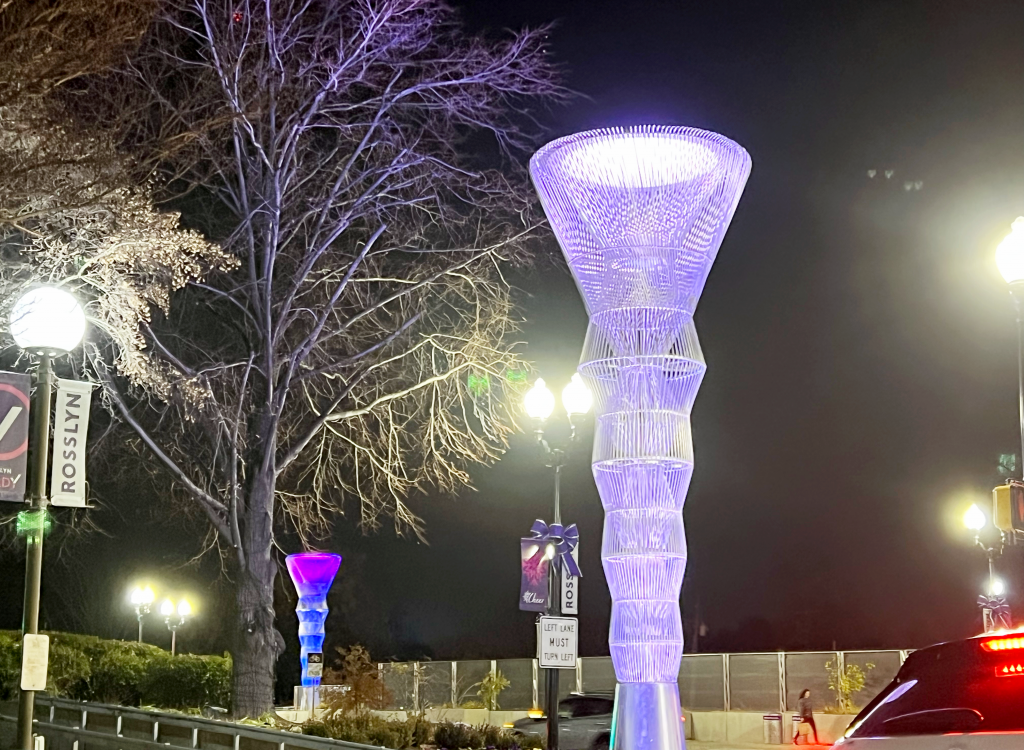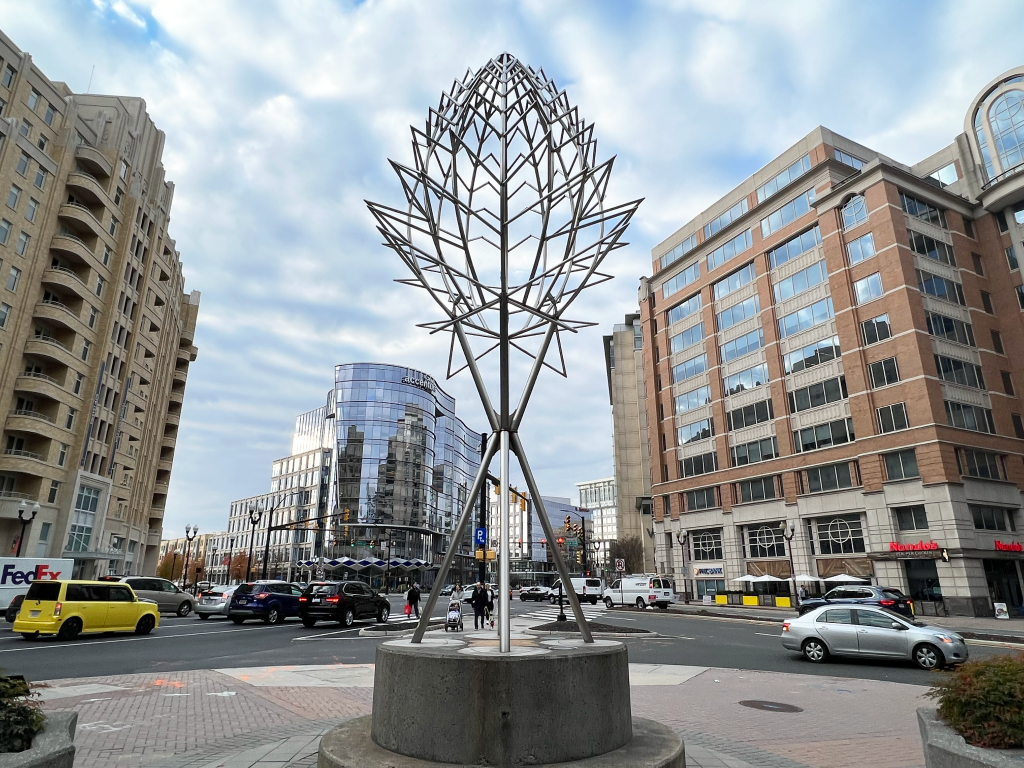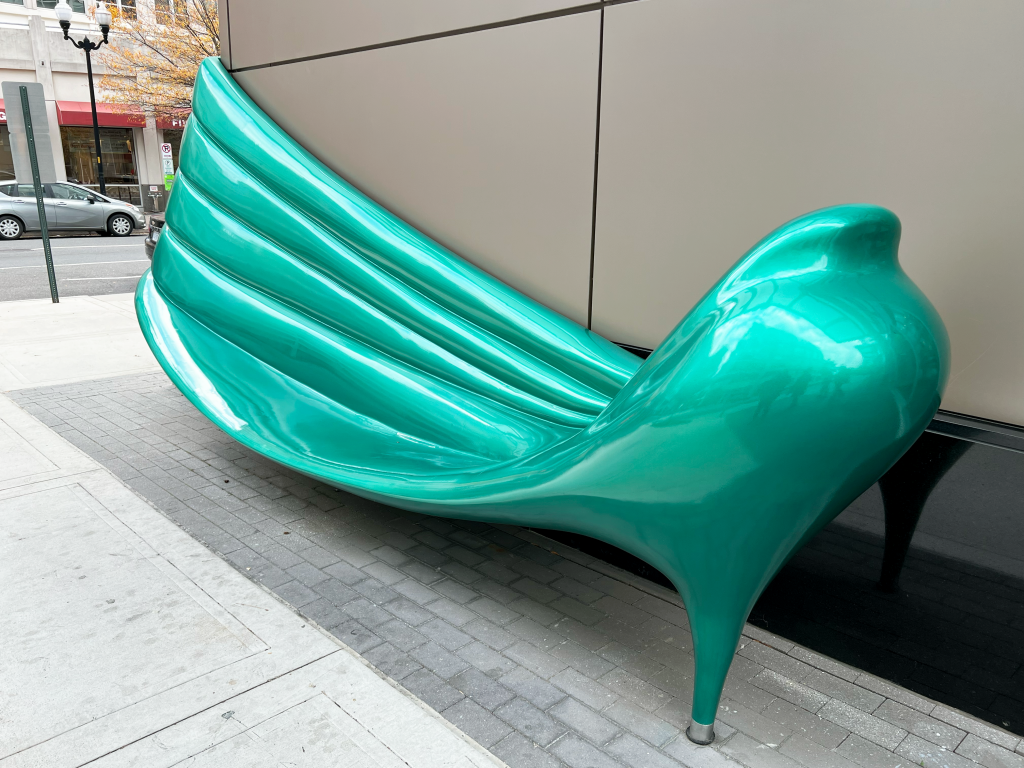The 17-year-old original master plan for public art in Arlington County needed an upgrade and last month, the Arlington County board unanimously approved one— updating the county’s Public Art Master Plan for the first time since its adoption in 2004.
The plan is a document that details the guiding principles for public art in Arlington.
One focus of the updated plan is to respond to a county priority focusing on equity in the community to support the county’s vision statement of being a “diverse and inclusive world-class urban community.”
The updated plan sets goals for new approaches to public art while focusing on the diversity of art installment locations, artists and types of art.
Public art is defined as temporary or permanent art — including murals, sculptures or architectural work — that is paid for with county funds, located on publicly-owned property or negotiated as part of a special project, according to the plan.
Arlington County has more than 70 permanent public art projects that were commissioned as part of capital improvement projects, by developers or community groups.
Goals focus on diversity
The field of public art is rapidly expanding with arts and culture strategies being used to achieve equity goals, according to the updated public art master plan.
One goal in the plan focuses on expanding temporary artworks and non-permanent public art strategies to engage a more diverse group of artists.
Angela Anderson Adams, director of Arlington County Public Art, said the public art program strives to embrace equity to allow everyone to participate in, benefit from and contribute to resources in the community through public art projects.
She said the updated plan supports the county’s equity resolution adopted in 2019. According to the plan, which identifies equity as a value for the public art program to embrace, public art can be a vehicle where all people can contribute and access cultural and economic benefits.

The public art plan also considers the county’s racial equity framework and how it can be embraced in planning and decision making.
The plan aims to distribute public art more widely in the county using a diverse range of artists and expanding community participation.
“These are approaches to programming public art that can lend themselves more immediately to greater diversity, equity and inclusion,” Anderson Adams said.
The county is working on a forthcoming implementation guide that will outline locations, artist selection methods and the types of projects the county’s public art program intends to pursue, according to Anderson Adams.
“Specifically regarding recruitment of and support for a diverse pool of artists, the guide will detail how we intend to explore a broader range of opportunities and remove unintentional barriers,” she said.
Anderson Adams said efforts to diversify the public artist pool may include apprenticeship, training and grant opportunities.
Anika Kwinana, chair of Arlington County’s Arts Commission, said the commission passed its own internal equity statement in January of this year, committing to champion policies and practices that ensure an inclusive and equitable arts sector.

“For us as a commission, we don’t want those to just be words on a page, but we want to model through our own activities, through our own connections, to what is happening in the county that we are visible to the community and that the voices of the community are heard,” she said.
Kwinana said she hopes the updated plan showcases the county’s rich history in historically Black communities as well as other neighborhoods with minority populations.
“I hope that my children will be able to see themselves and the community reflected in the art that continues to develop in the county,” she said.
Equity and diversity in public art nationwide
Forecast, a nonprofit organization, researches ways to introduce more equity in public art policies and advocates for public art that advances justice.
Jen Krava, Forecast’s director of programming and new initiatives, said in addition to the efforts in Arlington County, events are happening across the country to move public art into more inclusive practices and equitable programming.
“I think it was an undercurrent there, but now it’s really being unveiled and surfacing,” she said.
Krava said local governments like Arlington can work to include diversity into public art by building relationships with various groups throughout a community.
“Getting to know people in your community that you don’t already know and making an effort to be in the same place as them I think is really a first key step,” she said.
Planning commissioners question if updated plan will reflect diversity
During a planning commission meeting in October 2021, Planning Commissioner Stephen Hughes raised questions over how the plan will ensure more permanent art installations reach underserved areas.
Hughes said there was an initial goal in the updated plan which would use a percent of contributions from development projects for public art in underserved areas. Developers in the county make contributions to the Public Art Fund to support public art projects in the area, usually within close proximity to the development project.
“It’s in the hopes to move some of that money to expand our opportunities in areas that were underserved,” Hughes said.
But this goal was removed from the plan because of specific rules with how contributions from developers have to be used, according to Hughes.
“The bottom line is there are going to be areas that have a density of people that are outside of the areas of current investment for the past 30 to 50 years,” he said.
Hughes, who lives on Columbia Pike, an underserved area for public art, also raised questions over whether contributions set aside for public art in underserved communities will focus on temporary or permanent art installations.
While Hughes said both temporary and permanent public art is beneficial, permanent art installations exist for decades.
“I don’t think the plan will go really far in actually getting permanent art installations in communities that aren’t going through massive redevelopment,” he said.

During the same planning meeting, Planning Commissioner Tenley Peterson questioned how the plan will address equity strategies related to art commissioning.
“It’s important that Arlington’s public art reflect the diversity of Arlington, and what better way to achieve that than hiring artists whose diverse, lived experiences contribute to the artwork they create,” he said in a statement to The Wash.
Artist perspectives
Sharon Malley, a 10-year Arlington County resident, is an artist at Columbia Pike Artist Studios.
She said while she thinks the updated plan seems comprehensive, it seems broad in how the goals will be implemented.
“It doesn’t give specific examples of what the plans are,” she said. “It leaves a lot of room for interpretation.”
Malley, who lives in South Arlington, said her community is a diverse part of the county with a large immigrant population. She said there could be more opportunities to highlight their culture through public art.

Malley, who has a background in intellectual disabilities and autism, said the plan is lacking in equitable public art opportunities for those with a broad range of disabilities.
“Engage the public to create the art that will then engage more of the public to interact with it,” she advised.
Artist Anne Hancock has lived in Arlington for over 50 years and has served on the boards of the Arlington Arts Center and the Columbia Pike Artist studios.
Hancock said she likes that the updated master plan incorporates equity and inclusion principles.
“The one area that is always a little murky is the funding,” she said.
Hancock said areas like the Columbia Pike corridor are lacking in public art, but referenced how the plan identifies the area as a priority corridor.
She said she remains skeptical and has doubts about whether the plan will be successful in addressing some priorities.
“I think it’s certainly a well thought-out plan and it’s got a lot of good language in it,” she said. “How it will actually play out I suspect will depend on funding.”















Add comment